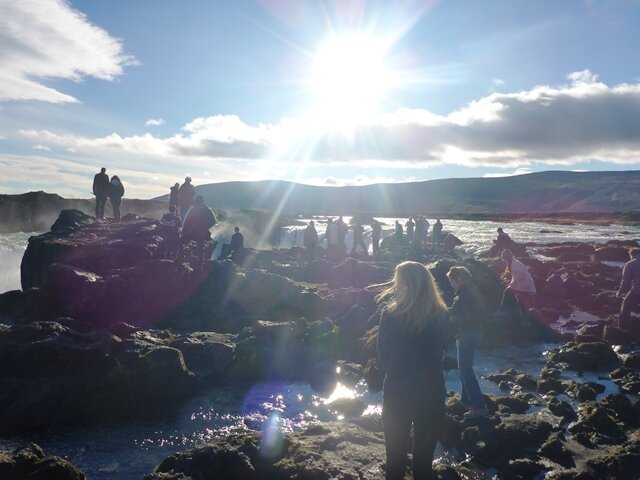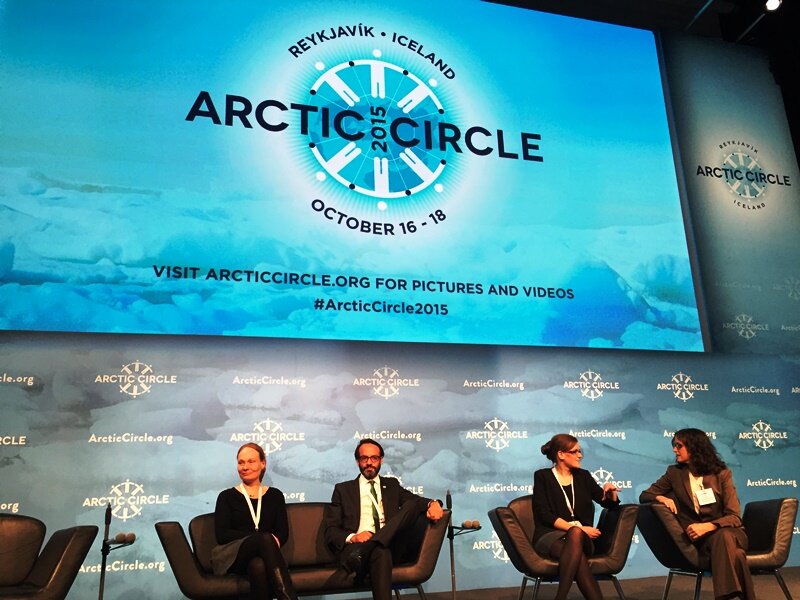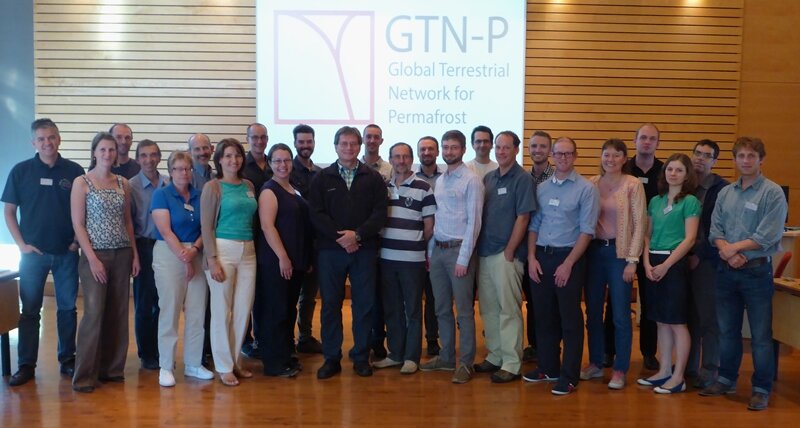Chersky 2013: Current state at the site
Tuesday, 9th of July 2013
 (Photo: Martin Hertel) Olaf Kolle after cutting the vegetation of a 1x1 m plot with a tussock inside.The day after the arrival at the station we used for a visit to our measuring area to get an overview of the progress. For me it is really exciting because I just saw pictures so far and now I can actually visit the place of my PhD project for the first time.
(Photo: Martin Hertel) Olaf Kolle after cutting the vegetation of a 1x1 m plot with a tussock inside.The day after the arrival at the station we used for a visit to our measuring area to get an overview of the progress. For me it is really exciting because I just saw pictures so far and now I can actually visit the place of my PhD project for the first time.
The site is located nearly 20 km upstream from our station and we have to go by boat, which takes about 30 min for each direction. The boat trip is really an adventure, where one can see beautiful nature and the panorama of the vast landscape.
At the site it is planned to install two eddy-covariance towers within the tussock tundra. One tower will be placed within the drainage ring (tower and ring were installed in 2005 and are still there) while a reference tower (not installed so far) will represent a natural ecosystem.
Both of the tower sites are located along the river in a distance of ~ 800 m, with a central maintenance area in the middle. During our first visit, we were very impressed by the infrastructure our Russian colleagues had prepared already.
The boardwalks, which connect the towers to the central area, are made out of halved pallets and are completely installed with a total length of about 1.5km. Next to boardwalks the power cables are installed at wooden tripod in a height of ca. 2.5 m. At the central maintenance area a container house (wooden house placed at the top of a container) is being built at the moment to accommodate the workers and the people who will stay at our site to keep the generator running during the winter.
 (Photo: Martin Hertel) Container house at the central maintenance area. Currently, the workers stay in the generator house, which is an old trailer for electricity supply. Now, the next steps are to build wooden cabins next to the towers to store the analyzer and loggers.
(Photo: Martin Hertel) Container house at the central maintenance area. Currently, the workers stay in the generator house, which is an old trailer for electricity supply. Now, the next steps are to build wooden cabins next to the towers to store the analyzer and loggers.
Maybe, what I describe right now, doesn´t sound so fascinating for the people in Europe, but you have to keep in mind that in this remote areas no building supply store exist, where you can buy for example building material and cables.
Also there are no trees in this area, which can be used as building material and for this reason everything, which we want to use, has to be transported to the site, sometimes over long distances. So finding all the building material, transporting it to the actual site and installing it is quite an accomplishment – we certainly owe our Russian colleagues a big favor for this!
 (Photo: Fanny Kittler) Fuel tank (left) and generator house (right) at the central maintenance area.Unfortunately our instrumentation boxes didn´t arrive during the next days. Therefore we had to improvise, and conduct parts of the research plan that can be done without our missing equipment. We conducted some transect measurements to get a better insight into the spatial variability of conditions on the site (e.g. thaw depth, water table depth), identified the positions of the chamber flux measurements, and did vegetation analysis.
(Photo: Fanny Kittler) Fuel tank (left) and generator house (right) at the central maintenance area.Unfortunately our instrumentation boxes didn´t arrive during the next days. Therefore we had to improvise, and conduct parts of the research plan that can be done without our missing equipment. We conducted some transect measurements to get a better insight into the spatial variability of conditions on the site (e.g. thaw depth, water table depth), identified the positions of the chamber flux measurements, and did vegetation analysis.
Finally, on Monday evening we got the news that our boxes cleared customs and are now on their way towards Cherskiy via air cargo transport. Now it is just a matter of days until we will receive them and we are looking forward to that day.
Written by Fanny











